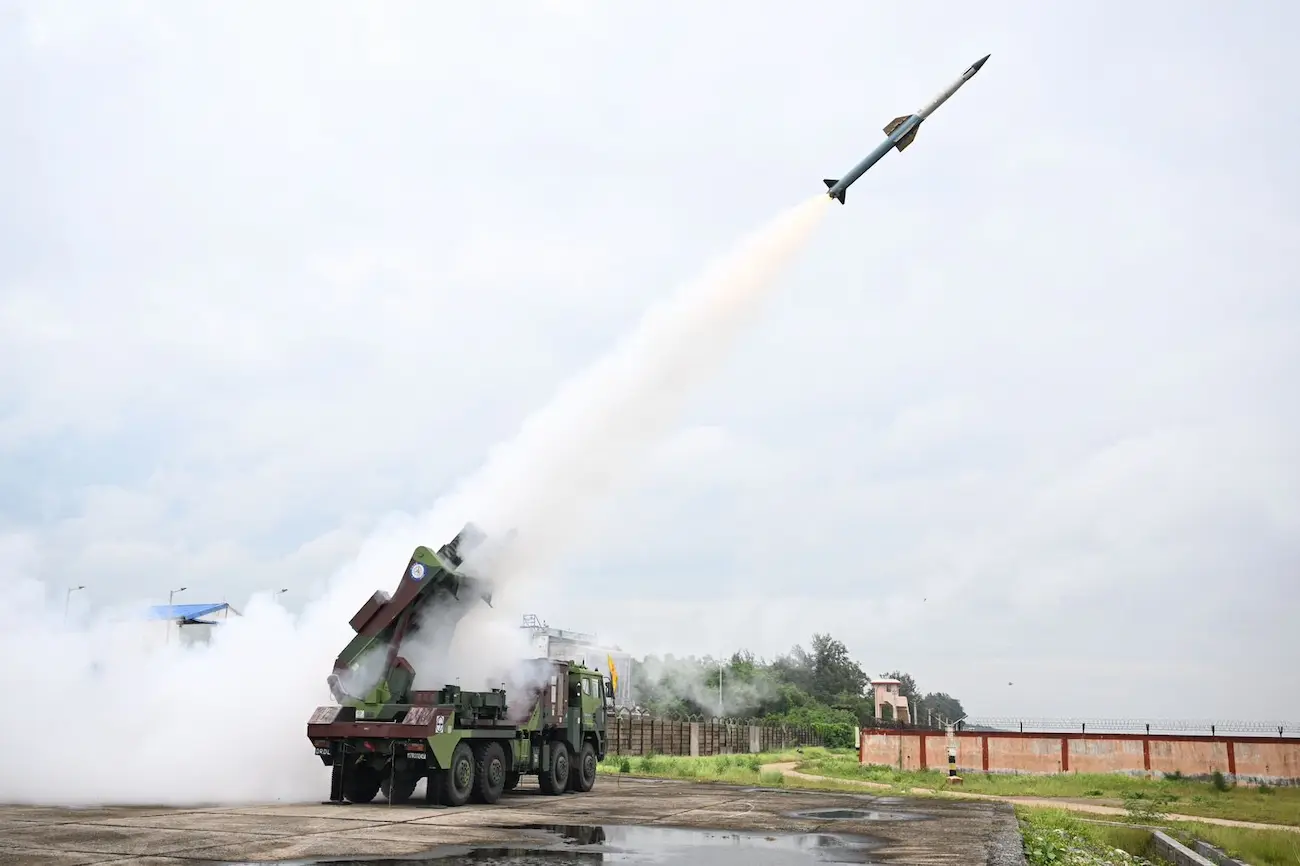
India’s successful IADWS test marks a major defence milestone, showcasing missile and laser precision (photo-X@rajnathsingh)
New Defence System Sends Strong Signal to the World – India has taken a giant leap in its defence capabilities. On August 23, 2025, the country successfully tested its first Integrated Air Defence Weapon System (IADWS missile system), a powerful multi-layered shield designed to protect against aerial threats. The test, conducted off the coast of Odisha, has not only impressed defence experts but also caught the attention of global powers, especially China.
What Is The New Defence System IADWS and Why Is It a Big Deal?
The Integrated Air Defence Weapon System (IADWS) is a home-grown defence solution developed by India’s Defence Research and Development Organisation (DRDO). It’s not just one weapon, it’s a combination of three advanced technologies that work together to detect, track, and destroy enemy aerial targets.
Here are the three key components:
- QRSAM Missile (Quick Reaction Surface-to-Air Missile): Targets fast-moving aircraft and drones at medium range.
- VSHORADS (Very Short Range Air Defence System): Designed to shoot down low-flying threats like helicopters and slow drones.
- Directed Energy Weapon (DEW): A high-powered laser that can destroy targets with precision and speed.
During the test, all three systems worked together to shoot down three different targets at once: two high-speed unmanned aerial vehicles (UAVs) and a multi-copter drone. This proves that India now has the ability to defend its skies from multiple threats at the same time.
How the Test Was Conducted and What It Proved
The test took place at 12:30 PM on August 23 off the coast of Odisha. It was witnessed by senior scientists from DRDO and representatives from the Indian Armed Forces. The goal was to see if the IADWS could detect and destroy multiple aerial targets in real-time and it did exactly that.
Here’s what happened:
- The QRSAM locked onto and destroyed a high-speed UAV flying at medium altitude.
- The VSHORADS system took down another UAV flying at a lower range.
- The DEW laser system targeted and disabled a multi-copter drone with pinpoint accuracy.
All systems were controlled by a centralized command center, which coordinated the radar, communication, and weapon systems. The test was a complete success, with all targets eliminated and flight data confirmed by range instruments.
Defence Minister Rajnath Singh congratulated DRDO and the Armed Forces, calling the test a “major milestone” in India’s journey toward self-reliance in defence technology.
Global Reaction: Why China Is Watching Closely
India’s successful test has made waves internationally. China, in particular, is reportedly disturbed by India’s growing defence strength. The IADWS adds a new layer of protection to India’s borders and critical infrastructure, making it harder for any enemy to launch surprise aerial attacks.
Experts say this system could play a key role in future conflicts, especially in regions like Ladakh or Arunachal Pradesh, where tensions with China have flared in the past. With IADWS in place, India can now respond faster and more effectively to any aerial threat.
China’s concern is understandable. The IADWS is similar to advanced systems like the U.S. Patriot missile system or Israel’s Iron Dome. By developing its own version, India has shown that it can match global standards without relying on foreign imports.
What’s Next for India’s Defence Future?
The successful test of IADWS is just the beginning. India plans to deploy this system across key military zones and strategic facilities. It will help protect airbases, radar stations, missile launch sites, and even major cities from drone attacks or missile strikes.
This achievement also supports Prime Minister Narendra Modi’s vision of “Atmanirbhar Bharat” (self-reliant India), where the country builds its own advanced defence systems instead of buying them from abroad.
In the coming months, DRDO will continue refining the system, improving its range, speed, and accuracy. There are also plans to integrate it with cyber defence and surveillance networks under a broader initiative called “Sudarshan Chakra.” India’s skies just got safer and the world is taking notice.
Also read – Project Kusha: India’s Bold Leap Toward Air Defense Supremacy
Stay updated with latest updated news blogs on Rapido Updates.